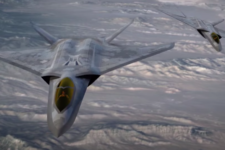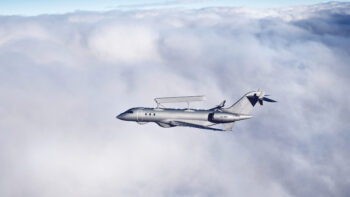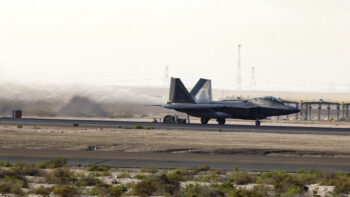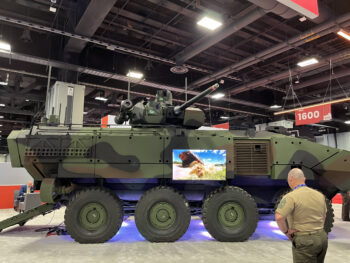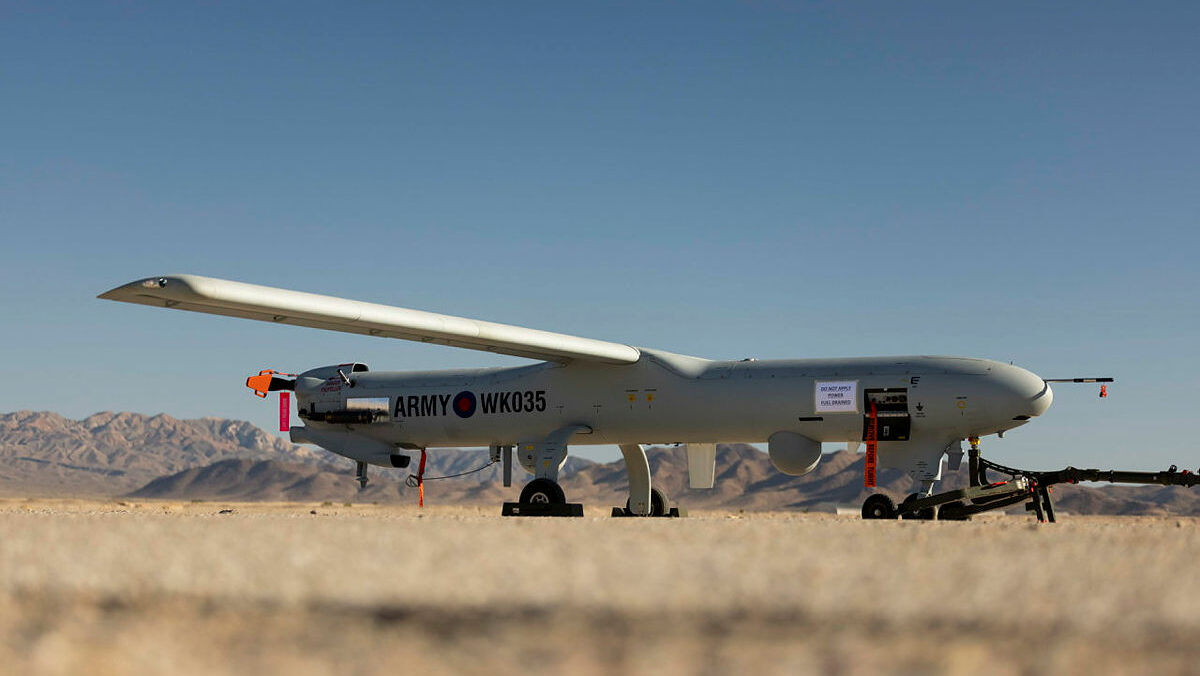
The UK has announced it will scrap a fleet of British Army Watchkeeper drones (UK MoD)
BELFAST — In a surprise announcement, the UK has said it will scrap five warships, 31 helicopters and a fleet of 46 intelligence, surveillance, target acquisition and reconnaissance (ISTAR) drones.
The move, announced in parliament today by UK Secretary of State for Defence John Healey, will generate savings of £500 million ($632 million) over the next five years, he said, and get rid of “outdated capabilities.” But it also drew immediate criticism from opposition party lawmakers.
The cuts are “all backed” by service chiefs and were made in consultation with personnel involved in the UK’s strategic defense review — set to release results of equipment planning and strategic thinking in mid-2025. “Allies have been informed and we have constant dialogue with NATO,” added Healey.
On the naval side, two amphibious assault ships, HMS Albion and HMS Bulwark, will be withdrawn from service at the end of the year. Healey suggested the vessels had been “effectively retired by previous ministers, but superficially kept on the books,” at a cost of £9 million a year.
The Type 23 frigate HMS Northumberland will be axed because of “structural damage that makes her simply uneconomical to repair,” he noted, alongside two Wave-Class tankers, “neither of which has been to sea for years.”
Elsewhere, the British Army’s Watchkeeper drone fleet will be retired, a fate that follows years of delays, cost overruns and a series of test and operational crashes. As of September 2022, the UK had spent £1.31 billion on the program, according to a lawmaker statement. Watchkeeper initially entered service in 2014, supporting Afghanistan force protection efforts, but has not been involved in military operations since. The aircraft was deployed in 2020 over the English channel in a surveillance capacity to monitor migrant boats.
A total of 14 CH-47 Chinook heavy lift helicopters, including “some” that have been in service for 35 years, will be retired, in parallel with 17 Puma multirole rotorcraft. The Pumas had been due to be replaced under the £1 billion New Medium Helicopter (NMH) acquisition, but that plan was thrown into disarray in August after Lockheed Martin and Airbus walked away without submitting bids, leaving Leonardo as the last competitor standing.
The phasing out of older Chinooks is a different matter because they are set to be replaced with new H-47ER (Extended Range) platforms beginning in 2027.
“The UK is the only nation to be provided access to this class-leading heavy-lift helicopter capability outside of the US,” said Grant Shapps, former UK defence secretary, in March.
Healey revealed that in all, the new cuts “are set to save the MoD £150 million over the next two years, and up to £500 million over five years, savings that will be retained in full in defense.”
Reacting to the changes, Matthew Savill, director of military sciences at the Royal United Services Institute, a British defense think tank, said in a statement, “These are mostly capabilities that are approaching retirement anyway, have been at low levels of readiness or aren’t worth further refits or investment (Watchkeeper is probably obsolete).”
“But the fact that Defence either can’t crew them, or is prepared to cut them to make very modest savings over five years in the current international environment is an indication of just how tight resources must be in the MOD right now,” he added. “In particular, the Defence Review will be under pressure to set out the future role of the Royal Marines; how the Navy will bring into service and sustain more escorts, which are the workhorses of the fleet; and the impact upon helicopter capacity and procurement.”
As DoD shifts $50B in spending, can an old playbook protect legacy programs?
Running through potential winners and losers under Defense Secretary Pete Hegseth’s move to shift $50 billion towards different priorities in fiscal 2026.



